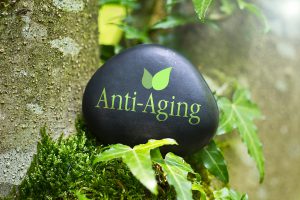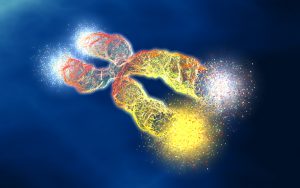Most people figure they must be getting older based on how they feel and look. We wince at our first grey hair, deepening wrinkles, and shifting body fat. We huff and puff climbing the stairs, forget names, and occasionally leak fluids. We relate to the line from a Leonard Cohen song, “I ache in the […]
Tag: aging
Longevity Medicine: How We Age
Gerontology is the scientific study of aging. It’s a relatively new field, pretty well dominated by research PhDs. Certainly it’s a science that was virtually nonexistent when I was in medical school, back when preventive medicine itself got little more than lip service. With the recent arrival of anti-aging medicine/longevity medicine, MDs started paying more […]
Longevity Medicine: The Earlier You Start, The Longer You’ll Live
Leading an orchestra in Anton Bruckner’s Fourth Symphony is a real workout for any conductor. Tall and straight-backed, the very elegant Swedish Maestro Herbert Blomstedt stepped to the podium and led the Chicago Symphony Orchestra for the 66-minute piece. From memory, no score in front of him. He would repeat this performance for two more […]
You’re Only As Old As Your Arteries
I first heard this phrase in medical school, but physicians have been using the phrase “hardening of the arteries” to describe the slow decline and death of old people probably since they started dissecting bodies in Ancient Greece. If you’ve got a few spare hours and a yellow highlighter, you might want to print out […]
Anti-Aging Therapies: Carl Bogaard, Hormones, and Peptides
Before I get into today’s details about longevity medicine–lab tests, hormones, peptides, and the like—let’s pause and reflect on Carl Bogaard, who died August 7 at age 103. Mr. Bogaard was famous as a fitness buff, doing dozens of pushups daily, even at 102 years old. He seemed like a good guy who also took […]
Before I Forget: My Supplements for Memory
As we get older, many of us do worry about the health and well-being of our brains. No kid taking the SAT who forgets a vocabulary word she’d studied the night before is concerned that this is the first sign of dementia. But as the years pass, you ask yourself if forgetting someone’s name, wondering […]
This Side Of The Sod: Dr E’s Anti-Aging Supplements
Slowing the rate at which you age isn’t just for old people. If you’re under 40, the supplement basics offered in WholeHealth Plan #1 provide plenty of coverage, provided you live your entire life with the goal of reaching your upper 90s or early 100s. But living a long life, though undeniably nice, isn’t much […]
Intravenous NAD+ and Your Telomeres
In recent weeks, there’s been a noticeable upsurge of interest in the anti-aging therapies we offer at WholeHealth Chicago. Maybe it has something to do with pandemic year 2020. Now that we’re vaccinated and peeking our heads out from our hidey-holes, emerging from darkness into light, we sense we’ve lost a year. Since we can’t […]
How To Slow Aging and Track Your Results
Most people figure they must be getting older based on how they feel and look. We wince at our first grey hair, deepening wrinkles, and shifting body fat. We huff and puff climbing the stairs, forget names, and occasionally leak fluids. We relate to the line from a Leonard Cohen song, “I ache in the […]
Anti-Aging Peptide Therapy
Ask ten people to define peptide therapy and it’s doubtful you’ll get a coherent response. Search for it online and you’ll be overwhelmed by information and likely put off by claims that sound too good to be true (“Burn fat! Combat mental decline!). Let’s face it, we’d all like to enhance fat burning, slow aging, […]
A Genuinely Useful Blood Test
Many a time, in person or via phone, someone will say a variation of “Look, I’m taking all these vitamins and minerals but I really don’t know what I’m doing. I think I’m eating right, but I might have some vitamin or mineral deficiencies I know nothing about and I don’t know the consequences.” This […]
Returning To School + Phosphatidyl Choline for Chronic Illness and Anti-Aging
Before I start this Health Tip on phosphatidyl choline I want to voice a quick opinion about kids returning to school in the Chicago Public School (CPS) system. The stance of the Chicago Teachers Union seems totally correct, that the decision should be based on a meeting of the minds: those of teachers and those […]
NAD+: Finally Getting Serious About Anti-Aging Therapy
We’re living in a time of major, worldwide breakthroughs when it comes to understanding how we age and also the steps we can take to not only slow down aging, but to all appearances reverse the process. Over history, the fountain of youth seekers came, literally and figuratively, to dead ends, but back then Ponce […]
To A Long and Healthy Life!
You may have read earlier this summer about the public health statisticians who announced that Chicagoans could get a reasonable estimate about how long they’ll live based on their neighborhood, sort of a Death by Zip Code. If you live in Streeterville, you’ve got a good chance to reach 90. If you’re struggling in Englewood, […]
Male Menopause: Is It Real?
Short answer: Yes, but don’t hope for any quick fixes—that’s pharmaceutical industry-think. Another way to view male menopause: Sure, a ball will bounce, just not as high over time. I get asked about male menopause all the time, almost always by women (who, admittedly, represent the majority of my patients) and only rarely by my […]
Disappointments With Testosterone
For 80 (!) years physicians have prescribed testosterone to men without being certain if it actually had any effect other than raising testosterone levels. The only FDA-approved indication for testosterone is pathological hypogonadism, in which there’s an actual disorder of the male reproductive system that results in the body not producing enough testosterone. Examples are […]
Can We Slow Down Aging?
Ever notice how people age? Some people just look younger or older than their actual age. We see an old friend after an absence of a few years and think, “Jeez! Did he age!” and wonder what might have befallen him to press the fast-forward button on the aging process.
DHEA
The steroid Hormone DHEA (dehydroepiandrosterone) has been hyped as a supplement that will deliver the virtual fountain of youth, with extravagant claims that it can slow aging, melt away Fat, enhance memory, prevent osteoporosis, and increase libido. Naturally produced and released by the adrenal glands, DHEA is ultimately converted into estrogen (the female sex hormone) and androgen (the male sex hormone).
Selenium
The trace mineral selenium makes its way into our bodies because it is contained in certain foods. Over time, it becomes part of nearly every cell, with particularly high concentrations in the kidneys, liver, pancreas, spleen, and testes.
The most concentrated food source for selenium is the Brazil nut; a single one contains 120 mcg, (which is about twice the RDA). Seafood in general, as well as poultry and meat, are also good sources. So are grains, especially oats and brown rice.
Saw Palmetto
From the olive-sized berries of the saw palmetto tree comes a remedy for benign enlargement of the prostate gland. While harmless, this common condition (BPH, or benign prostatic hyperplasia) can interfere with the urine’s exit from the bladder, causing frequent urination, nighttime awakenings, and other uncomfortable urinary symptoms. It’s not clear what causes BPH. But as the millions of men who suffer from it can attest–more than half of men over 60 are affected–relief is welcome indeed.










